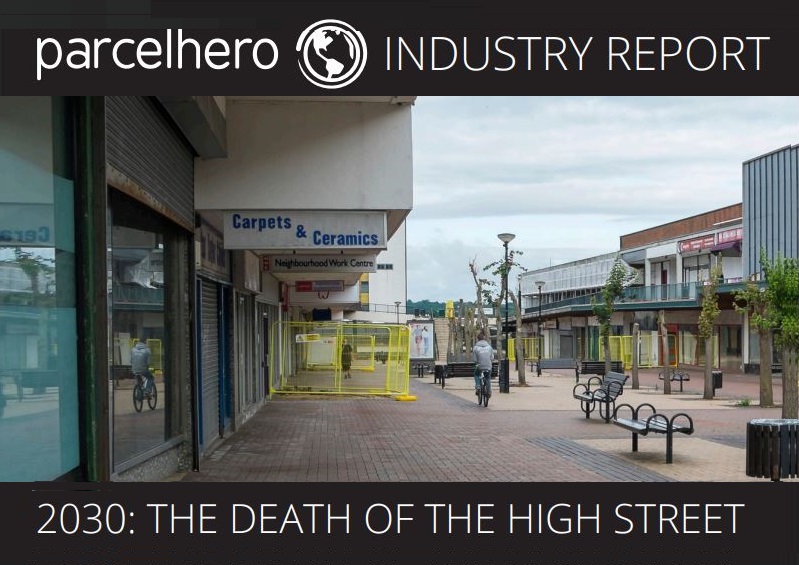Black Friday week will be a £12bn sales jackpot for many large retailers, forecasts the home delivery expert Parcelhero. However, it’s warning that many of our favourite specialist sellers can’t afford to slash their prices any more. Fierce competition and mounting returns means the Black Friday-Cyber Monday event has lost its shine for many independent retailers.
Black Friday is set to see a 3% rise in UK sales this year, resulting in a £1.15bn bonanza on Friday 28 November, forecasts the home delivery expert Parcelhero. It predicts that UK sales will reach £12bn over the entire Black Friday-Cyber Monday week.
However, despite this jump in turnover, this year it could be a blacker Friday than usual for many of our favourite independent retailers, cautions the parcel price comparison expert. Parcelhero is warning that the pressure to discount prices is leaving some sellers with wafer-thin margins that could be wiped out entirely by the increasing expectation of free returns.

Parcelhero’s Head of Consumer Research, David Jinks M.I.L.T. (pictured right), says: ‘Online e-commerce giants such as Amazon and many UK big name brands will be licking their lips at the prospect of another massive Black Friday bonanza and, indeed, many major UK stores have been offering Black Friday deals all month.
‘In 2024, Adobe Digital Insights reported total UK online sales for the Black Friday week were £11.7bn (up 5.1% YOY) and £1.12bn (up 7.2% YOY) on the day itself. We’re anticipating a lower 3% increase this year, especially if the Autumn Budget on 26 November contains unwelcome news for consumers.
‘The sad truth is that many of Britain’s favourite smaller retailers are very unlikely to see their final profits rise by even 3% and, in fact, their prospects for Black Friday are increasingly dark. Such is the competition and the scale of the discounts offered by major retailers that smaller regional and specialist sellers are finding their profit margins stretched to the limit in order to remain competitive.
‘The traditional pre-Christmas boom is when many niche retailers – such as toy & model shops, craft sellers, vintage clothing stores and specialist music shops – traditionally make the bulk of their annual profits. However, in recent years, Black Friday has become a race to see which retailers can slash prices the furthest or miss out on the shopping spree entirely.
‘Bargain-conscious Brits now expect to see sizable pre-Christmas offers throughout November, which has now become a month of Black Fridays culminating in the Black Friday-Cyber Monday weekend. Not so long ago, stores didn’t start their holiday sales until Boxing Day, when they could sell off their remaining Christmas stock that hadn’t sold at its full sticker price before 25 December. Now they are forced to drop their margins at their busiest period or miss out on the Black Friday feeding frenzy.
‘Stores that only offer limited or no discounts could find themselves having a distinctly Beige Friday. The complex choice facing many small retailers is whether to maintain their usual prices and risk shelves full of stock come Boxing Day or discount and risk tight margins and out-of-stocks. All of which makes Black Friday a forecasting nightmare.
‘For small sellers, the Black Friday gloom is not only caused by increasingly cut-throat discounting. Following 2024’s peak sales, £1.51bn-worth of gifts were returned to retailers, with the financial burden falling disproportionately on many of our favourite small specialist sellers.
‘Stores that thought they were riding high on a healthy-looking profit from their Black Friday sales suddenly found that, as the seasonal returns came rolling back, they were facing plunging margins and shelves filled with unsaleable stock.
‘Smaller companies lose a significant portion of a product’s profit when a return occurs, with their total costs often reaching up to 66% of the item’s original price. The loss is not just the refund but also includes the costs of processing, labour, inspection and shipping. These costs can add up quickly, particularly for small businesses that don’t have plenty of staff to process returns. Additionally, of course, products such as seasonal fashion items can lose value if they are not resold promptly.
‘The final nail in the coffin for small online retailers may be that 8% of shoppers admit to returning items several times a month, whether to large businesses such as ASOS or niche model railway stores.
‘Some online retailers told us in January that they were coping with return rates as high as 60% following Black Friday and the pre-Christmas peak. Many small sellers feel that they have to accept such returns unconditionally in order to maintain their all-important five-star ratings. Small online marketplace traders told us returns cost them at least 13% more than High Street-only stores because of the 14-day “cooling off” period for products bought online under 2014’s Consumer Contracts Regulations.
‘Ultimately, however fickle Black Friday proves to be, it’s those stores with a combined High Street and online offering that are most protected against unexpected events. Parcelhero’s influential report “2030: Death of the High Street” has been discussed in Parliament. It reveals that retailers must develop an omnichannel approach, embracing both online and physical store sales. Read the full report at: https://www.parcelhero.com/content/downloads/pdfs/high-street/deathofthehighstreetreport.pdf






